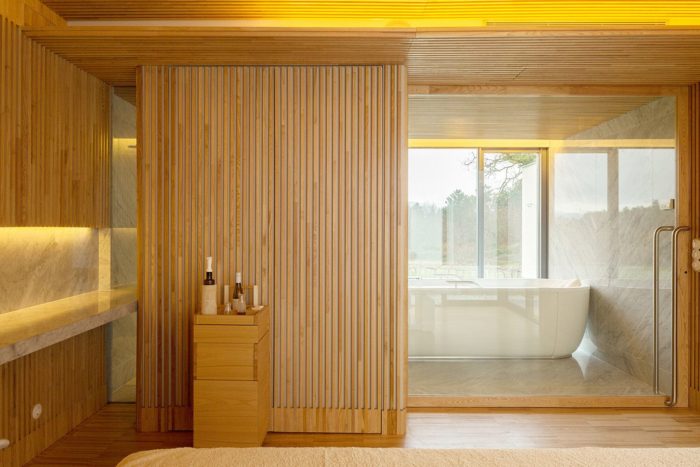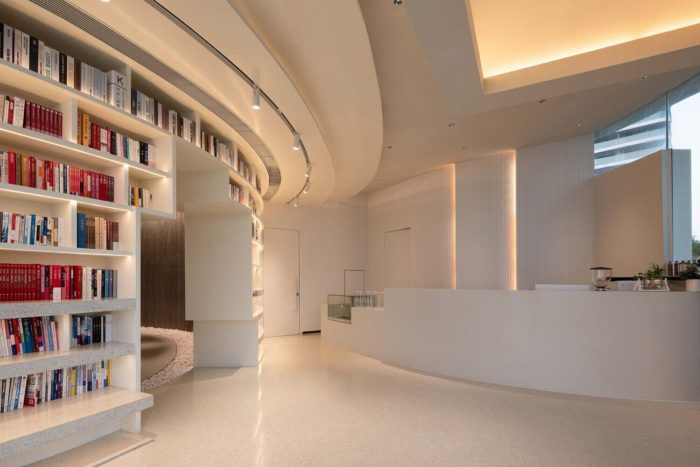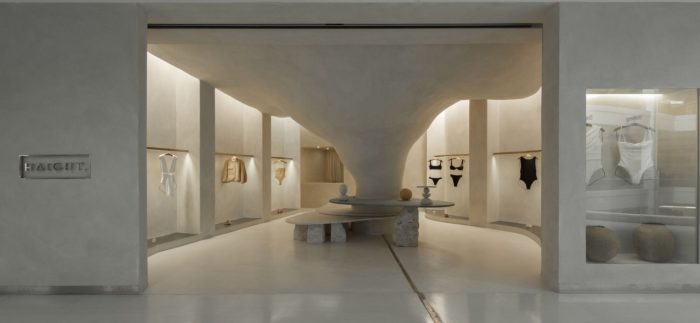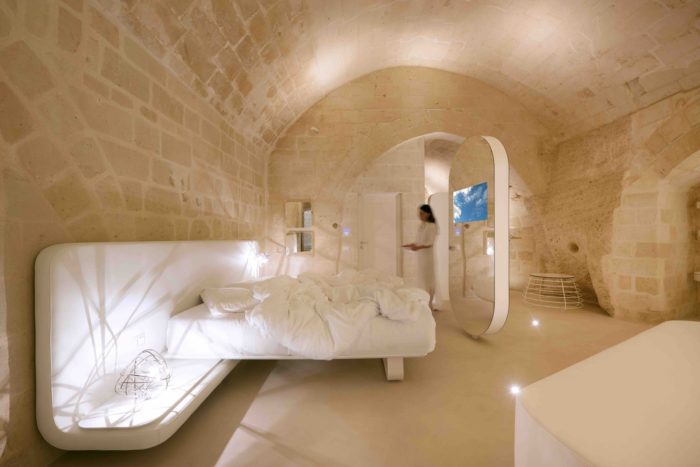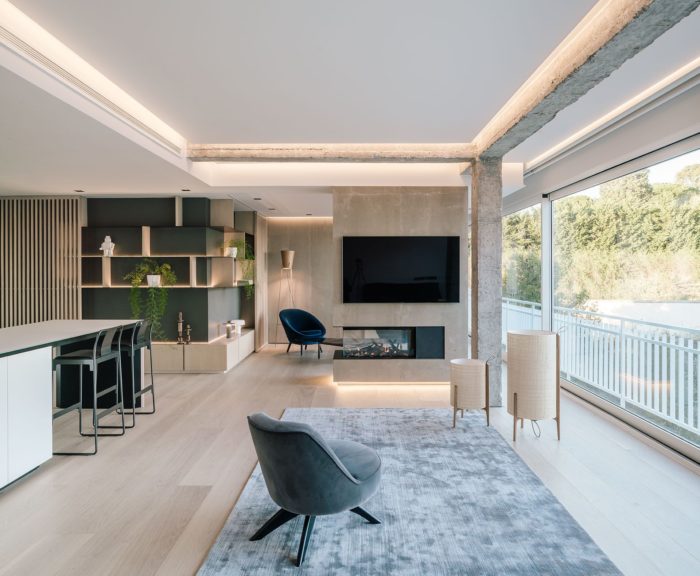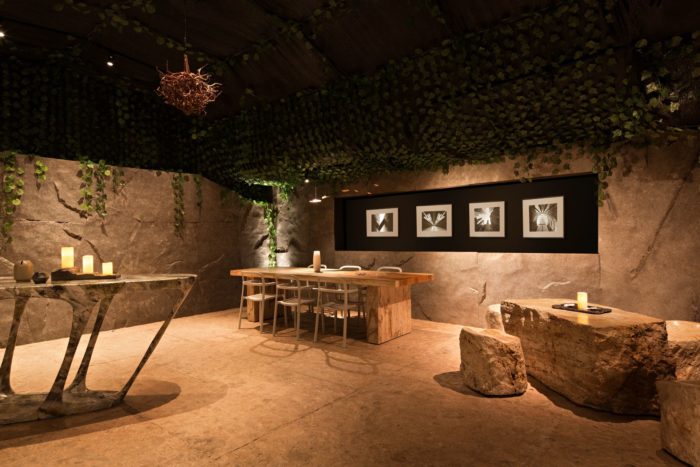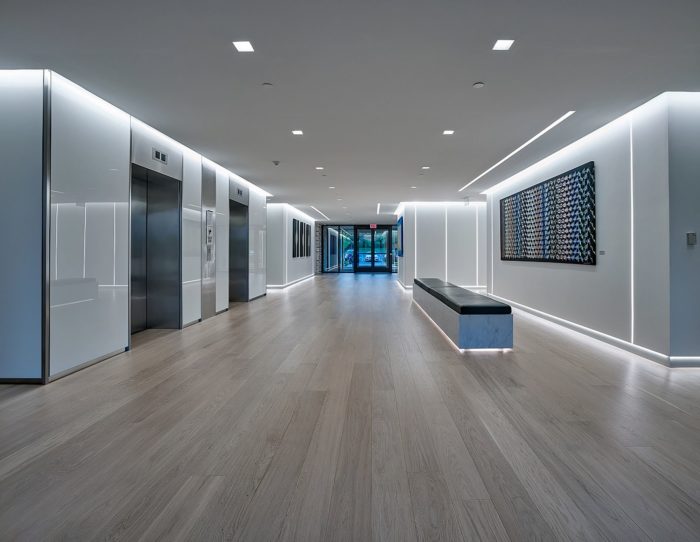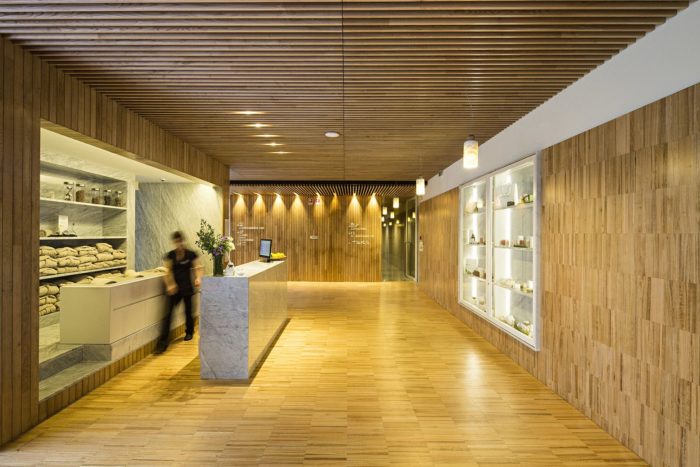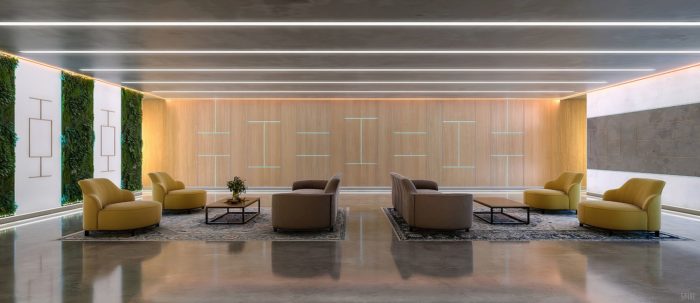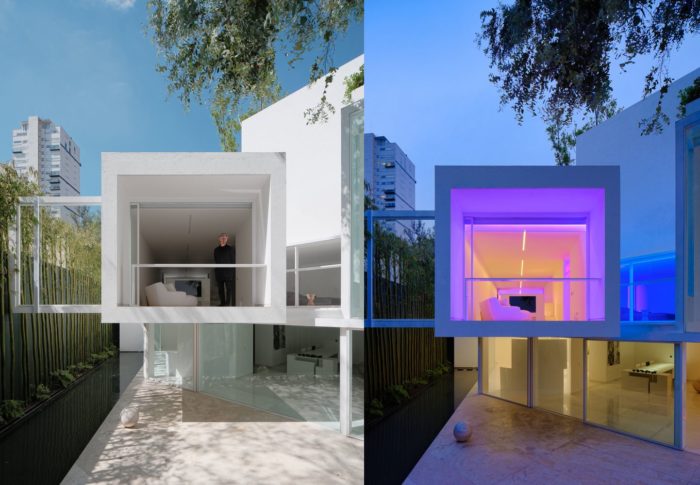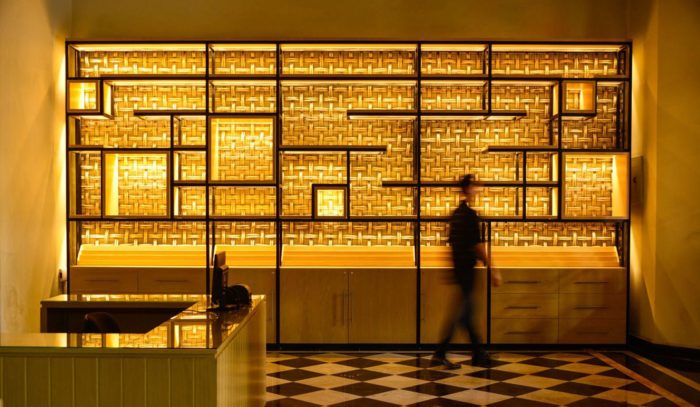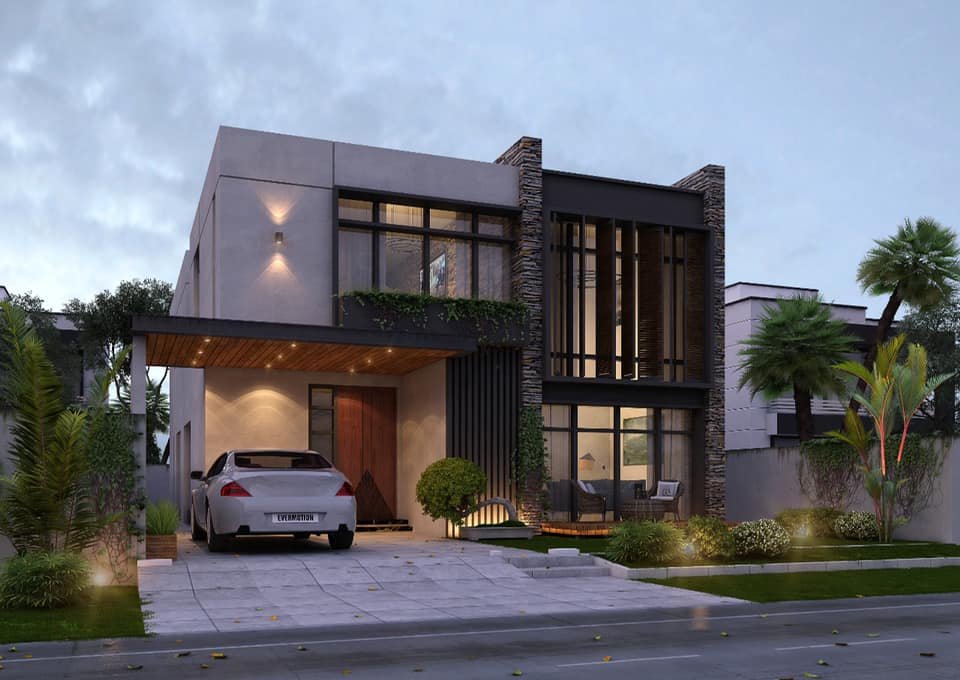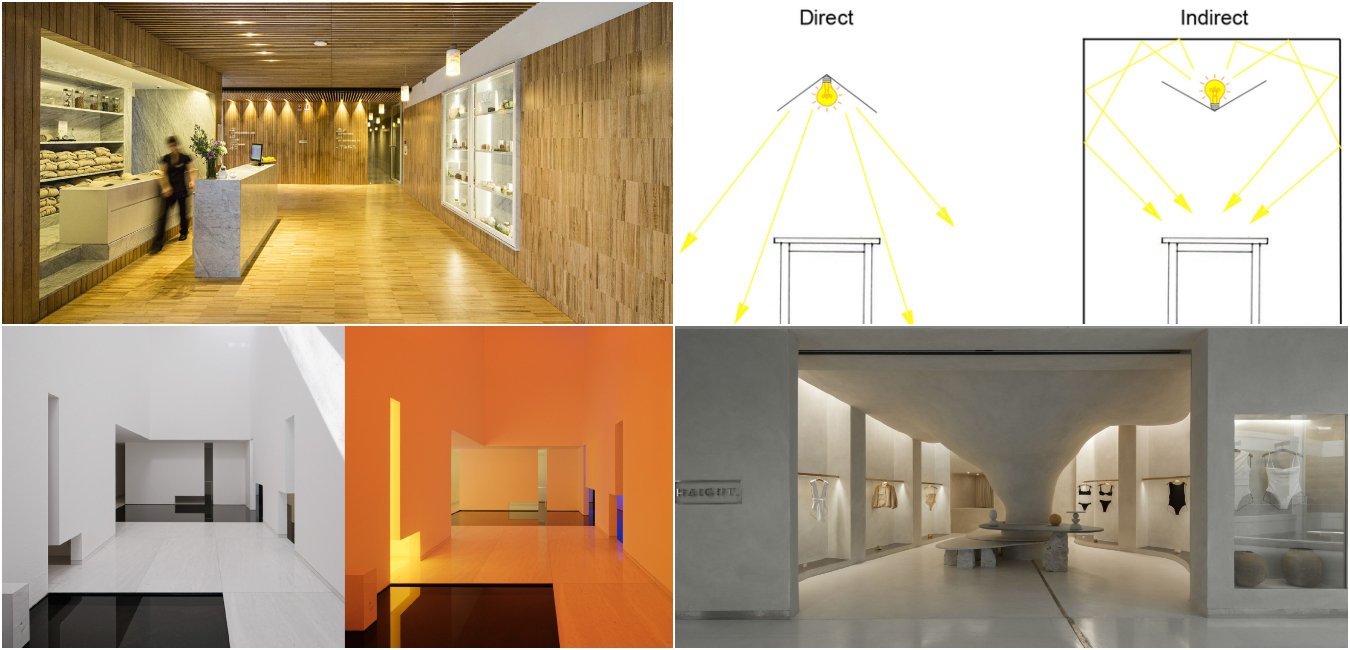
How Indirect Lighting Transforms Room Interiors Tips for Crafting Perfect Interiors
1) What Is Indirect Lighting?
Indirect Lighting occurs when light is directed onto a surface and then reflects off it. An example is the moon, which reflects sunlight and provides Indirect Lighting at night. In indoor spaces, we experience Indirect Lighting when Lighting fixtures direct light toward ceilings or walls, allowing it to bounce around the room. On the other hand, we have natural illumination, commonly known as task lighting, which aims the light source directly at the specific item or area to be illuminated.
Indoor spaces that lack natural light can significantly benefit from Indirect Lighting because it creates a soft and comfortable light that reduces eye strain. Additionally, it’s ideal for spaces that undergo frequent changes, such as flexible-use rooms where furniture or layouts may be adjusted. The even distribution of light from indirect sources contributes to a uniform and pleasing illumination throughout the space.
2) Advantages of Indirect Lighting
Indirect lighting can offer several advantages when used in interior design. It can create a warm and inviting atmosphere within a space and improve its overall appearance by making it appear larger and brighter. In addition, indirect lighting can promote a calm and relaxing environment.
Here are some of the advantages:
- This type of lighting is more energy-efficient than direct lighting because it minimizes wasted light.
- This type of lighting helps to evenly distribute light in a room, reducing eye strain during reading or work.
- This lighting technique creates a dramatic ambiance in a room by bouncing light off surfaces, producing shadows and highlights.
- This lighting style creates a tranquil and soothing atmosphere in a room due to its gentle and non-direct nature, which makes it less intense on the senses.
- This lighting style has the potential to create the perception of a larger and brighter room. This occurs because the walls and ceiling don’t absorb the light, enabling more light to reflect into the space.
3) Disadvantages of Indirect Lighting
There are some drawbacks to using indirect lighting in interiors. This type of lighting can be more expensive than direct lighting and may be less efficient for task lighting. Here are some of the disadvantages:
- This type of lighting can be challenging to control compared to direct lighting. Directing the light to specific areas can be challenging because the light bounces off surfaces.
- Choosing this type of lighting can be more expensive than direct lighting because additional fixtures like track and recessed lighting are required.
- This type of lighting may not effectively provide task lighting as it does not directly illuminate objects in the room.
- This type of lighting can create the illusion of a darker room as the light is not directly reflected into the space.
- This type of lighting can cause discomfort due to glare.
4) How To Incorporate Indirect Lighting Into The Interior
1- Ceiling Accent Lights
There are many ways to incorporate indirect lighting into an interior, and a popular option is to use recessed lighting. Recessed lighting is installed in the ceiling, casting light downwards onto the floor or furniture. This method is highly effective in creating a soft and even illumination. To enhance the aesthetics of your room, you can install light fixtures in the false ceiling that match the design and color scheme, adding grace and charm.
2- Side Table Lamps
Indirect lighting is a classic and timeless way to enhance the atmosphere of your room. You can achieve this by placing lampshades beside your bed. You can choose trendy, compact, and stylish shades for your lamps to give it a contemporary touch. These lamps provide a sophisticated touch of indirect light to your room and add a sense of drama, personalization, and luxury. You can strategically place lamps on tables, shelves, or other surfaces to create a gentle and ambient glow. With different types of lamps available, selecting the appropriate one is crucial to achieve the desired effect.
3- LED Strip Lights
LED light fixtures can create an elegant and refined ambiance in your room. You can install them in the false ceiling area or place them strategically beside or above your wardrobe to fill the space with a pleasant and pure light. The fixtures’ soft glow, resembling cotton, provides a sophisticated and classy illumination to your room.
4- Spotlights
Spotlighting draws attention to specific objects, such as artwork or furniture. It is an indirect lighting technique that enhances the aesthetics of your ceiling design and adds an undeniable charm to your interiors. Unlike in the past, where spotlights were primarily used in offices or showrooms, they have become a significant trend as design concepts, sophistication, and style evolve. These spotlights are now among the top choices for implementing indirect lighting ideas.
Here are some other tips on how to incorporate indirect lighting into your home:
- Place the lighting fixtures strategically to highlight the architectural features or artwork in a space.
- Consider your budget. There are many types of indirect lighting available at different price points.
- When selecting indirect lighting, consider the size of the room and choose a light fixture that fits the space.
- Consider the atmosphere you wish to create. Do you want a relaxed and peaceful ambiance or a more dramatic one?
- When selecting indirect lighting, consider your home’s style and choose indirect lighting that harmonizes with your decor.
- Discover the potential of indirect lighting to create an array of lighting effects, from a focused beam to a diffused, ambient glow.
- Consider the amount of natural light available in the room. You may require less indirect lighting if the space is already well-lit naturally.
5) What Is The Difference Between Direct And Indirect Light?
Direct lighting is typically used for task-oriented activities such as reading or working, offering focused illumination. On the other hand, indirect lighting is often used to create a softer, ambient, or decorative lighting atmosphere. Using indirect lighting has several advantages. It produces more even and natural light distribution, reducing glare and eye strain. Additionally, indirect lighting can effectively highlight architectural features and showcase artwork.
On the other hand, direct lighting has its own set of advantages. It provides more concentrated and intense illumination, ideal for creating a striking and dramatic lighting effect. The choice between indirect and direct lighting for a particular space depends on the specific requirements of that space. For example, workspaces may benefit from more natural light, while living rooms may be better suited for a softer, indirect glow.
6) Use Both Indirect And Direct Light For A Functional And Comfortable Room
It is often tempting to use directional fixtures alone to create a cozy atmosphere in a room, but this can create a stark contrast between light and shadow. On the other hand, using indirect light can illuminate the walls and ceiling, but it may need to provide more light for specific tasks like reading or studying. A balance between direct and indirect lighting is necessary to create a functional, ergonomic, and comfortable room or office. The best way to achieve this balance is by combining indirect and direct light sources. Doing so can bring a room to life, making it engaging, intriguing, and comfortable.

